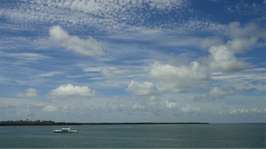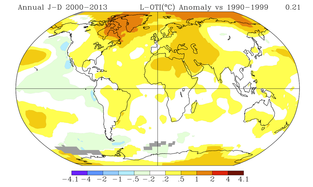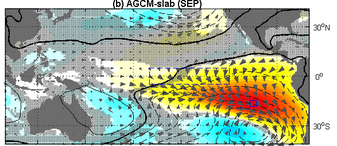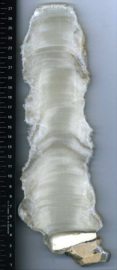Research Topics
 Photo Credit: Sandrine Apelbaum
Photo Credit: Sandrine Apelbaum
Clouds & Climate
Cloud feedback - coupled interactions between temperature and clouds - is the largest uncertainty in projections of future climate change because important cloud processes are not resolved in climate models. Our group uses a combination of observations from surface- and satellite-based instruments and climate models to investigate important questions regarding the role of clouds in the climate system.
We are interested in addressing the following:
Some findings from our publications:
Observations indicate that there are significant trends in cloud cover over four regions in the Indian and Pacific Ocean during the years 1954-2008. There has been a decrease in cloud amount over the northeast Pacific subtropical stratocumulus region and the equatorial western Pacific Ocean, which has resulted in positive cloud amount feedback. In contrast, there has been an increase in cloud amount over the equatorial central Pacific Ocean and western Indian Ocean, which has resulted in negative cloud amount feedback [Bellomo et al., 2014a].
Model experiments with enhanced cloud feedback over selected regions indicate that cloud feedbacks increase the persistence of the leading modes of climate variability in the Pacific and Atlantic Oceans. Low-level clouds over the subtropical stratocumulus regions in the southern hemisphere seem to be the only regions that increase the persistence of equatorial modes of variability, i.e., ENSO and Atlantic Niño [Bellomo et al., 2014b; Bellomo et al., 2015].
Cloud feedback - coupled interactions between temperature and clouds - is the largest uncertainty in projections of future climate change because important cloud processes are not resolved in climate models. Our group uses a combination of observations from surface- and satellite-based instruments and climate models to investigate important questions regarding the role of clouds in the climate system.
We are interested in addressing the following:
- Do we see significant changes in cloud cover over the last 55 years of available observations? How have these changes influenced the increase in Earth's temperature?
- How would a more realistic representation of cloud feedback in climate models impact global climate trends and the modes of internal climate variability (such as ENSO and Atlantic Niño)?
- Which regions and which type of clouds influence the leading modes of internal climate variability?
Some findings from our publications:
Observations indicate that there are significant trends in cloud cover over four regions in the Indian and Pacific Ocean during the years 1954-2008. There has been a decrease in cloud amount over the northeast Pacific subtropical stratocumulus region and the equatorial western Pacific Ocean, which has resulted in positive cloud amount feedback. In contrast, there has been an increase in cloud amount over the equatorial central Pacific Ocean and western Indian Ocean, which has resulted in negative cloud amount feedback [Bellomo et al., 2014a].
Model experiments with enhanced cloud feedback over selected regions indicate that cloud feedbacks increase the persistence of the leading modes of climate variability in the Pacific and Atlantic Oceans. Low-level clouds over the subtropical stratocumulus regions in the southern hemisphere seem to be the only regions that increase the persistence of equatorial modes of variability, i.e., ENSO and Atlantic Niño [Bellomo et al., 2014b; Bellomo et al., 2015].
 Observed surface temperature anomaly relative to 1990-1999 over the past two decades. Image courtesy of NASA GISS.
Observed surface temperature anomaly relative to 1990-1999 over the past two decades. Image courtesy of NASA GISS.
Global Warming Hiatus
For the past decade, globally averaged temperature has not been rising as fast as previous decades. Scientists have dubbed this time period the "Global Warming Hiatus" and have pointed fingers at the Pacific Ocean for being responsible, because tropical Pacific sea surface temperatures have been cooler than normal. Scarce deep ocean observations combined with dynamical ocean models have shown that the deep ocean is absorbing more heat. Scientists theorize that variability on interannual, decadal, or longer timescales can explain this phenomenon. While a handful of models can reproduce these theories, the observations to confirm are lacking [Clement and DiNezio, 2014].
The questions that our group is trying to answer:
By investigating a hierarchy of climate model setups, including or excluding certain boundary conditions, we can isolate the roles of each and determine major players in the mechanism of hiatus periods. We hope to find a connection between the variability of the model run and the frequency and magnitude of hiatus periods. This connection may reveal what has caused our most recent Global Warming Hiatus.
For the past decade, globally averaged temperature has not been rising as fast as previous decades. Scientists have dubbed this time period the "Global Warming Hiatus" and have pointed fingers at the Pacific Ocean for being responsible, because tropical Pacific sea surface temperatures have been cooler than normal. Scarce deep ocean observations combined with dynamical ocean models have shown that the deep ocean is absorbing more heat. Scientists theorize that variability on interannual, decadal, or longer timescales can explain this phenomenon. While a handful of models can reproduce these theories, the observations to confirm are lacking [Clement and DiNezio, 2014].
The questions that our group is trying to answer:
- Is this theory model-dependent?
- How do the statistics of hiatuses change with different climate physics and forcing?
- What role does sea ice, the ocean, the atmosphere, and forcing play in the occurrence of hiatus periods?
By investigating a hierarchy of climate model setups, including or excluding certain boundary conditions, we can isolate the roles of each and determine major players in the mechanism of hiatus periods. We hope to find a connection between the variability of the model run and the frequency and magnitude of hiatus periods. This connection may reveal what has caused our most recent Global Warming Hiatus.

Pacific Climate Variability
Climate variability of the Pacific Ocean is important because of its impacts on global climate and society. It is a complex topic because the climate in different regions of the Pacific influence one another. For example, the El Niño - Southern Oscillation (ENSO) in the tropical Pacific can influence the extratropical climate in the north and south Pacific via an “atmospheric bridge.” On the other hand, North Pacific climate variability, such as the North Pacific Oscillation, can in turn impact the tropical Pacific climate via both oceanic and atmospheric channels. For the latter, one of the well-established mechanisms is known as the North Pacific meridional mode, which has recently been shown to trigger ENSO events.
Our research group focuses on the climate teleconnection between the tropical and South Pacific. Specifically, we found a South Pacific meridional mode that conveys South Pacific atmospheric variability to the tropical Pacific and thus influences tropical Pacific climate [Zhang et al., 2014a]. Compared to its counterpart in the North Pacific, the South Pacific meridional mode acts as a stronger extratropics-to-tropics link [Zhang et al., 2014b].
Like the North Pacific meridional mode, the South Pacific meridional mode can also likely trigger ENSO events. However, these two ENSO precursors are statistically related to different ENSO flavors: the South Pacific meridional mode is more tied to Eastern-Pacific El Niño events while the North Pacific meridional mode has a closer link to the Central-Pacific El Niño events. We are currently investigating whether this statistical relationship has a physical explanation with observational support.
Climate variability of the Pacific Ocean is important because of its impacts on global climate and society. It is a complex topic because the climate in different regions of the Pacific influence one another. For example, the El Niño - Southern Oscillation (ENSO) in the tropical Pacific can influence the extratropical climate in the north and south Pacific via an “atmospheric bridge.” On the other hand, North Pacific climate variability, such as the North Pacific Oscillation, can in turn impact the tropical Pacific climate via both oceanic and atmospheric channels. For the latter, one of the well-established mechanisms is known as the North Pacific meridional mode, which has recently been shown to trigger ENSO events.
Our research group focuses on the climate teleconnection between the tropical and South Pacific. Specifically, we found a South Pacific meridional mode that conveys South Pacific atmospheric variability to the tropical Pacific and thus influences tropical Pacific climate [Zhang et al., 2014a]. Compared to its counterpart in the North Pacific, the South Pacific meridional mode acts as a stronger extratropics-to-tropics link [Zhang et al., 2014b].
Like the North Pacific meridional mode, the South Pacific meridional mode can also likely trigger ENSO events. However, these two ENSO precursors are statistically related to different ENSO flavors: the South Pacific meridional mode is more tied to Eastern-Pacific El Niño events while the North Pacific meridional mode has a closer link to the Central-Pacific El Niño events. We are currently investigating whether this statistical relationship has a physical explanation with observational support.

Paleoclimate
Much of our research aims to uncover details of past climates and apply that information to learn about future climate as well as to improve today's climate models. We study tropical rainfall variability and atmospheric dust patterns over the past 100,000 years in order to better understand the mechanisms controlling changes in precipitation and dust emission, transport, and deposition. External forcing - such as changes in Earth's orbital cycles and Heinrich events (past climatic events in which large glaciers melted in the North Atlantic Ocean) - can have major effects on climate through changes in temperature, precipitation, and dust characteristics. In particular, we are studying the effects of orbital precession on tropical precipitation [Chamales et al., submitted] and changes in the dust cycle during Heinrich events [Murphy et al., 2014].
A better understanding of these factors can lead to more accurate climate simulations and help to identify which areas of the Earth are likely to show significant changes in climate. Our findings from model simulations can be verified using paleoclimate records such as stalagmites and stalactites from caves or sediment cores from oceans and lakes. Proxy data for precipitation or dust deposition from these records can lead us to a more complete understanding of past climate. To achieve this goal, our group collaborates with faculty and students in the Marine Geology & Geophysics program at RSMAS.
Photo Credit: Monica Arienzo. Stalagmite sample collected from a currently submerged cave on Abaco Island, Bahamas in July of 2007 from a depth of 16.5 m below sea level.
Much of our research aims to uncover details of past climates and apply that information to learn about future climate as well as to improve today's climate models. We study tropical rainfall variability and atmospheric dust patterns over the past 100,000 years in order to better understand the mechanisms controlling changes in precipitation and dust emission, transport, and deposition. External forcing - such as changes in Earth's orbital cycles and Heinrich events (past climatic events in which large glaciers melted in the North Atlantic Ocean) - can have major effects on climate through changes in temperature, precipitation, and dust characteristics. In particular, we are studying the effects of orbital precession on tropical precipitation [Chamales et al., submitted] and changes in the dust cycle during Heinrich events [Murphy et al., 2014].
A better understanding of these factors can lead to more accurate climate simulations and help to identify which areas of the Earth are likely to show significant changes in climate. Our findings from model simulations can be verified using paleoclimate records such as stalagmites and stalactites from caves or sediment cores from oceans and lakes. Proxy data for precipitation or dust deposition from these records can lead us to a more complete understanding of past climate. To achieve this goal, our group collaborates with faculty and students in the Marine Geology & Geophysics program at RSMAS.
Photo Credit: Monica Arienzo. Stalagmite sample collected from a currently submerged cave on Abaco Island, Bahamas in July of 2007 from a depth of 16.5 m below sea level.
Local Climate Adaptation
